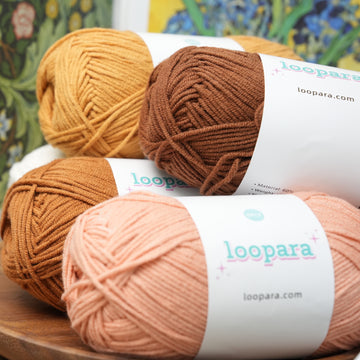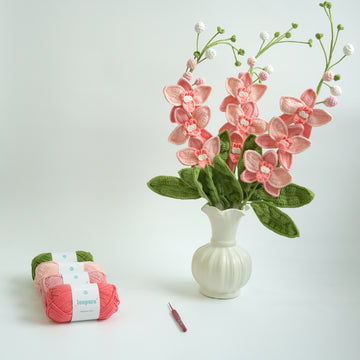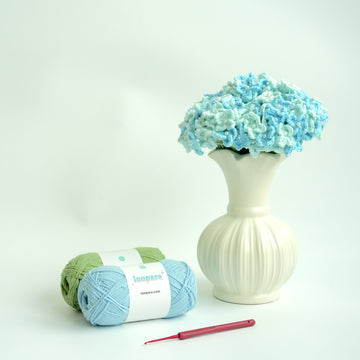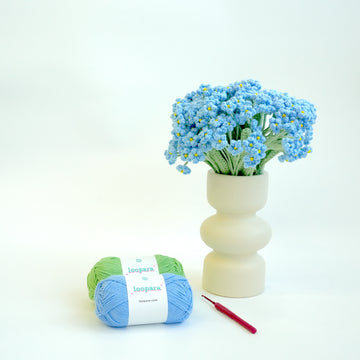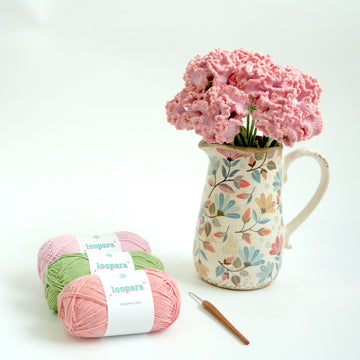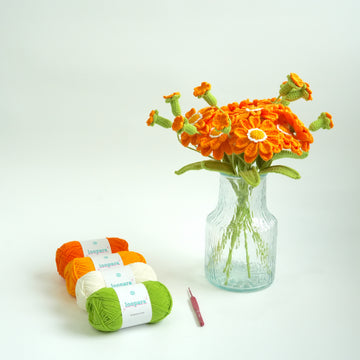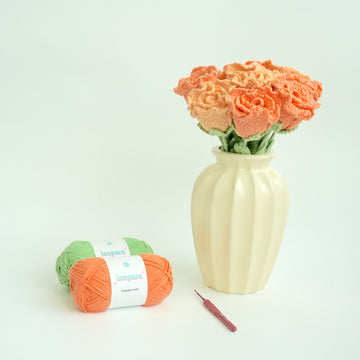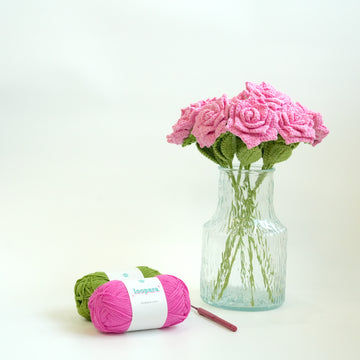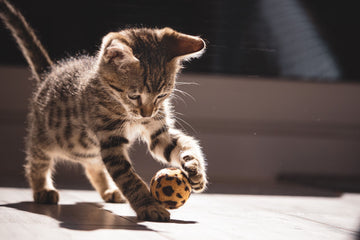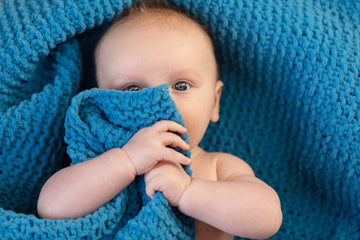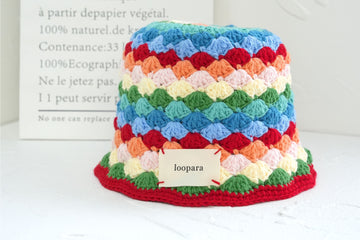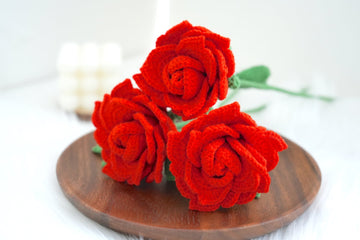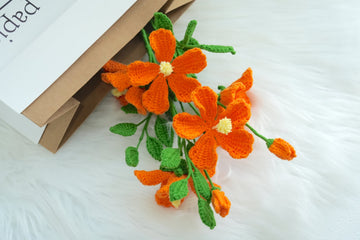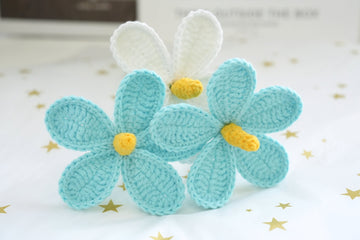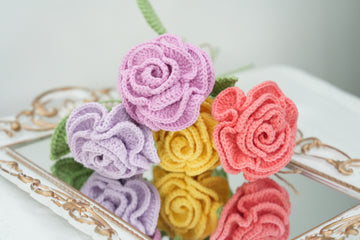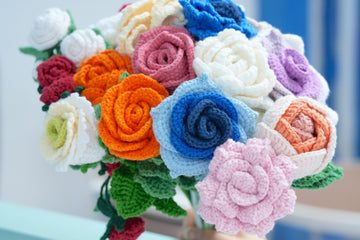A crochet blanket is a wonderful way to welcome a newborn, and a cosy gift for a toddler. But just how big should it be?
We’re going look at some standard crochet baby blanket sizes for different uses. We’ll look at how to decide what’s right for your project. And we’ll share some hints and tips to craft the perfect baby blanket.
Ready to find out more? Then step this way…
Do crochet baby blankets need to be a standard size?
First things first: there’s no such thing as the “right” size for a crochet baby blanket. The size that will work best will depend on how the blanket will be used. A blanket for a bassinet will be a different size to one for a baby’s car seat. And it will be different again to a swaddle blanket.
So start by deciding what kind of blanket you want to make. Here are some questions to consider:
- How long do you want the blanket to be able to be used for? A blanket for a bassinet is perfect if that’s something the baby needs, but it will also be quite small. If you want your blanket to continue to be used as the baby grows, something bigger will be more versatile.
- How much time do you have for your project? All other things being equal, a smaller blanket will take less time to make.
- Do you want to use a specific pattern? If you do, that will automatically give you a blanket of a particular size. But you can make it bigger or smaller will by using a different yarn weight and hook size to the ones that are recommended in the pattern. A thicker yarn and larger hook will give you a bigger blanket, a thinner yarn and smaller hook will decrease the size.
Recommended crochet baby blanket sizes
Once you’ve decided what kind of blanket you want to make, you can choose the size. The table below gives suggested sizes for different types of baby blanket.
|
Type of blanket |
Length |
Width |
|
Lovey |
12” (30 cm) |
12” (30 cm) |
|
Security blanket |
18” (45 cm) |
14” (35 cm) |
|
Preemie blanket |
24” (60 cm) |
18” (45 cm) |
|
Bassinet blanket |
28” (70 cm) |
14” (35 cm) |
|
Car seat blanket |
24” (60 cm) |
20” (50 cm) |
|
Crib blanket – small |
30” (75 cm) |
15” (38 cm) |
|
Stroller blanket / crib blanket - large |
36” (90 cm) |
30” (75 cm) |
|
Receiving blanket |
40” (100 cm) |
40” (100 cm) |
|
Baby blanket |
52” (130 cm) |
42” (110 cm) |
|
Swaddle blanket |
48” (120 cm) |
48” (120 cm) |
Eagle-eyed readers might spot that the metric measurements above aren’t precisely equivalent to the imperial ones. We’ve made small rounding adjustments for easier measuring.
If you want to adjust these measurements, go right ahead. Unlike with blankets for adults, you won’t have to worry about a baby blanket fitting a standard sized bed.
Add extra stitches for more width, and additional rows to make the blanket longer. Just remember that if you’re using more than one type of stitch, you’ll need to make sure your changes work with the pattern repeat.
Planning your crochet baby blanket size in advance
There are several advantages to choosing the size of your baby blanket before you start work:
- Making sure you have enough yarn. That’s particularly important if your blanket is going to be a single color. You’ll want to make sure all the yarn is from the same dye batch to avoid unintended changes in the shade as you work from different skeins. That will be a whole lot easier if you buy your yarn in one go.
- Helping you estimate how long it will take to complete the blanket. Knowing the size of the finished blanket is key to estimating how much time you’ll need to complete it. And if you’re working towards finishing the blanket by baby’s due date, having a clear plan from the outset will be a big help.
- Allowing you to make any necessary pattern adjustments in advance. If you’ve decided to make a blanket that’s bigger or smaller than the dimensions given in a pattern, deciding on the finished size in advance will probably save you some frogging. Make a gauge swatch to see how many stitches per row, and how many rows, you’ll need to crochet to create your desired size blanket.
Adjusting your baby blanket size as you crochet
If you prefer to keep things flexible, it’s also possible to adjust the size of the blanket once you’ve started.
If you’ve come to the end of the row and your blanket doesn’t look as wide as you’d expected, keep going! And if you want to add more rows too, there’s no reason you can’t. Just make a note of any changes to the pattern as you go to help you keep track.
If you’ve finished your blanket and it’s smaller than you expected, adding a border is a good option. That will provide extra surface area and give your blanket a neat finish into the bargain.
If you’re making a blanket using granny squares, adjusting the size is very easy. Just make more squares and stitch them on until you’re happy the blanket is big enough. If you want to, you can add a border at the end as well.
You could even use the same method to enlarge your blanket as baby grows into a toddler – and beyond! Just bear in mind that any border will need to be unpicked before you add new squares. Adding a new border at the end will make the bigger blanket look like it was always that size.
Also Read: How to Make a Crochet Pattern Bigger
Hints and tips for crochet baby blankets

There are a few things to bear in mind when you’re making a blanket for a baby.
1. Don’t make the holes too big
It can be all too easy for little fingers to get stuck in the holes between crochet stitches. Choosing a lighter weight yarn and smaller needle will give you fabric with a closer texture that’s still breathable.
Using particular types of stitches will help too. Cluster, blanket or sedge stitch are all good options to create a denser fabric.
2. Weave in yarn ends
Baby fingers can get tangled in yarn ends, so weave them into the wrong side of the blanket. We’d recommend using a metal yarn needle, as it’s easier to slide into the stitches.
Try to avoid the temptation to pull the yarn too tight. You want to keep the tension as consistent as possible with the rest of your blanket.
Also Read: 3 Ways to Weave in Ends Crochet Granny Square
3. Think about what type of yarn to use
There are lots of different opinions on the best yarn types for baby blankets, but we’d always recommend sticking to natural options.
Yes, some acrylic yarns are soft and they’re easy to wash. But they’re also made from fossil fuels and leach microplastics that are harmful to health. They can’t be put into a drier or the fibers will melt or shrink. And if they’re labelled as “hypoallergenic”, it’s because the plastic fibers have been coated in other substances to prevent toxins from escaping.
Cotton, on the other hand, is lightweight and hypoallergenic. It’s easy to machine wash too, and you can put it in the drier. (We’d recommend putting your blanket inside a pillowcase to protect the ends during the laundry process.)
Wool is snugglier than cotton, whilst still being breathable. And contrary to popular belief, it can be machine washed as long as you use a wool or delicates cycle and wool detergent. Keep it away from the tumble drier though.
Soft wools like merino can be a good choice. But while the lanolin it contains has antibacterial properties, some people are allergic to it.
Another natural yarn that’s becoming increasingly popular is bamboo. It’s soft, breathable and hypoallergenic. Look for yarns certified by the Global Organic Textiles Standard (GOTS) to be sure no pesticides have been used in their production.
4. Steer clear of embellishments
Tassels or buttons can add an attractive decorative touch to blankets for adults, but they’re best avoided with baby blankets.
Babies are prone to putting all kinds of things into their mouths – it’s part of how they explore their world. That makes anything that could come loose – buttons or sequins, for example – a potential choking hazard. And while tassels won’t have that issue, little fingers may get tangled up in them.
Crochet baby blanket sizes: a quickfire summary
When it comes to choosing a size for a crochet baby blanket, deciding on the purpose of the blanket is key. Security blankets, lovies, and bassinet blankets are cute and tiny. Blankets for strollers or cribs or strollers will be bigger.
Deciding on the dimensions at the outset will give you a head start. You’ll know you have enough yarn before you get started, and you can estimate how long it will take you to complete your project.
But if you want to adjust the size as you go along, that’s fine too. And you can even make an existing blanket bigger so it can continue to be used as baby grows into a toddler.


